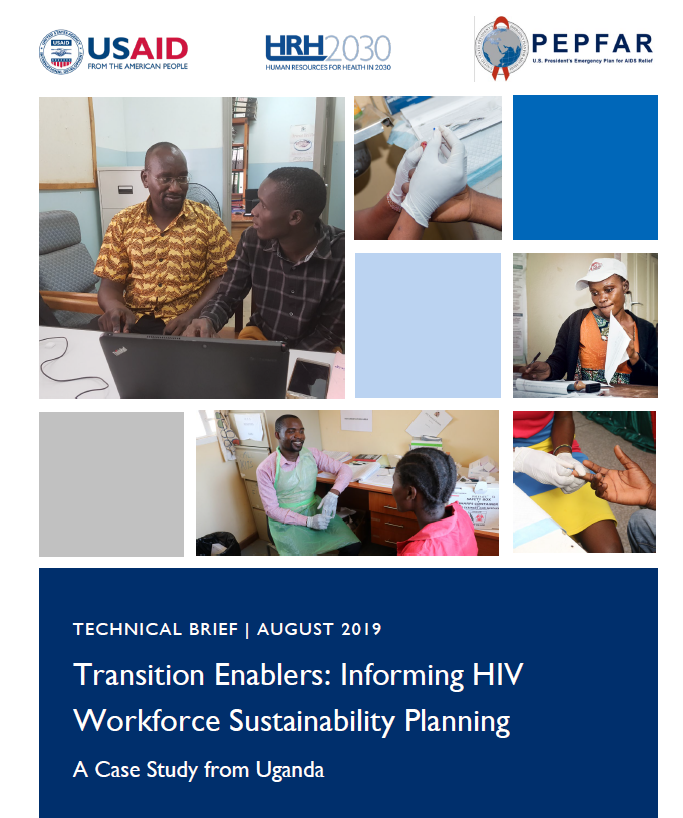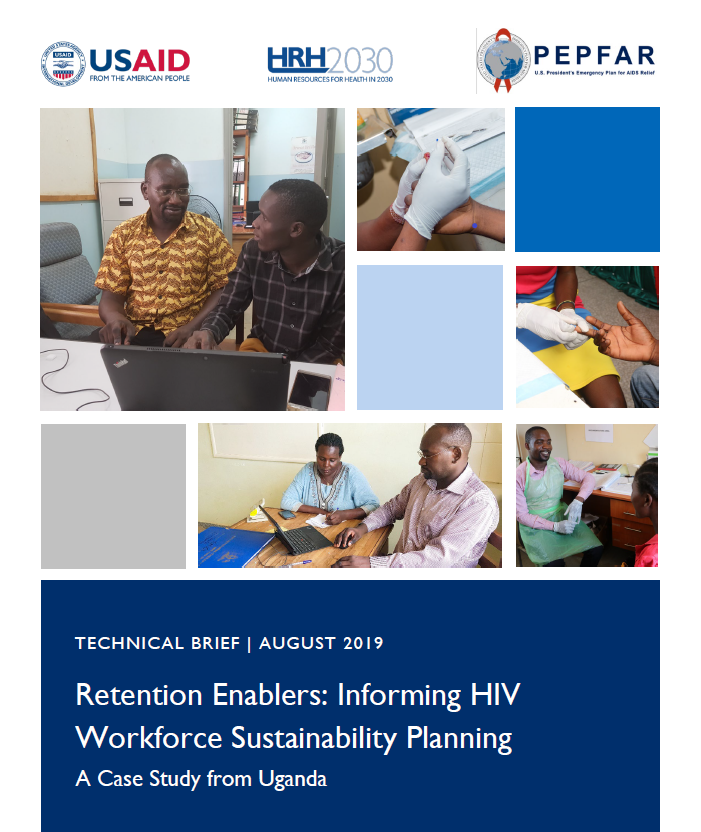15 Aug Brief Series on Informing HIV Workforce Sustainability Planning: A Case Study from Uganda
Throughout sub-Saharan Africa, human resource challenges have hindered countries’ efforts to achieve HIV epidemic control. To accelerate access to the services needed to realize the 95-95-95 goals[1], the U.S. President’s Emergency Plan for AIDS Relief (PEPFAR) and other donors, such as the Global Fund to Fight AIDS, Tuberculosis and Malaria (GFATM), have invested in tens of thousands of health and social workers, from clinical to lay cadres, across a number of countries.
Given the important role that these workers have played in HIV control progress, and to sustain the HIV response, it is vital that policymakers understand the factors and motivations that will enable successful transition and retention of donor-supported health workers locally in both the civil service and private sector.
Transition Enablers: Informing HIV Workforce Sustainability Planning: A Case Study from Uganda
Written for donors, government health leaders, and development partners, this brief describes how countries with a donor-supported HIV health workforce can successfully transition their donor-supported health workers to domestic funding sources. A case study from Uganda identifies best practices to inform broader HIV workforce sustainability planning.
DOWNLOAD
Retention Enablers: Informing HIV Workforce Sustainability Planning: A Case Study from Uganda
Helpful to donors, governments, and health facility managers, this brief focuses on retention of the HIV workforce, looking at PEPFAR-supported health workers who were absorbed into public service and have remained in service and working on HIV services. The Uganda experience provides examples of enabling factors that motivated health workers to remain engaged in the HIV health workforce after transition.
DOWNLOAD
Country: Global, Uganda
Resource Type: Technical briefs
Topic: HIV/AIDS, Leadership and governance
[1] To test 95 percent of all people living with HIV, place 95 percent of those testing positive on continuous anti-retroviral therapy (ART), and have 95 percent of those on ART virally suppressed by 2020





